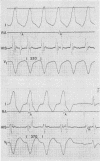Abstract
The electrophysiological effects of the intravenous administration of a new antiarrhythmic drug, lorcainide, were evaluated by programmed electrical stimulation of the heart in 23 patients with atrioventricular conduction disturbances (four patients), ventricular tachycardia (five patients), and accessory atrioventricular pathway (14 patients). Lorcainide did not affect the refractory period of the atrium, ventricle, atrioventricular node, or the AH interval. It lengthened the duration of the HV interval, the refractory period of the accessory pathway, and the width of the QRS complex. The drug terminated ventricular tachycardia in four of five patients. It is concluded that the drug may be of potential benefit in patients with ventricular tachycardia or accessory atrioventricular pathways (especially those with a short refractory period). Lorcainide is contraindicated in patients with bundle-branch block and prolonged HV interval.
Full text
PDF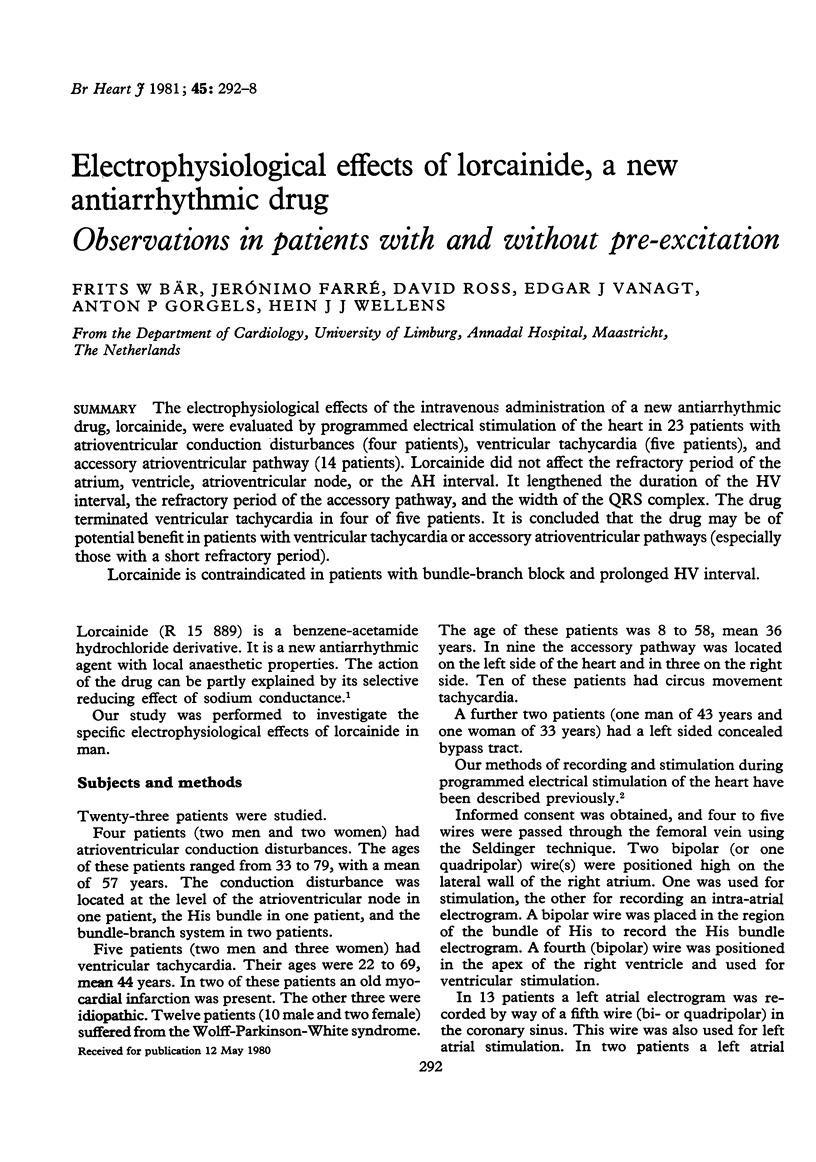
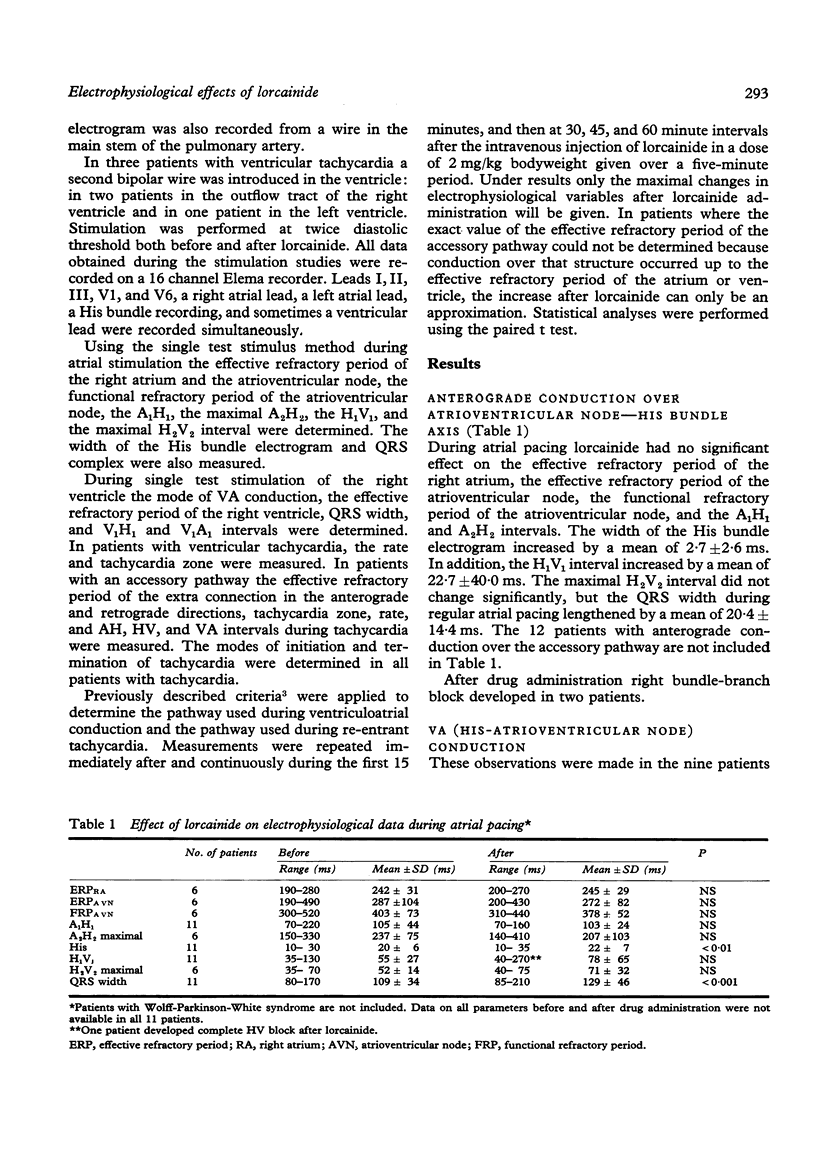
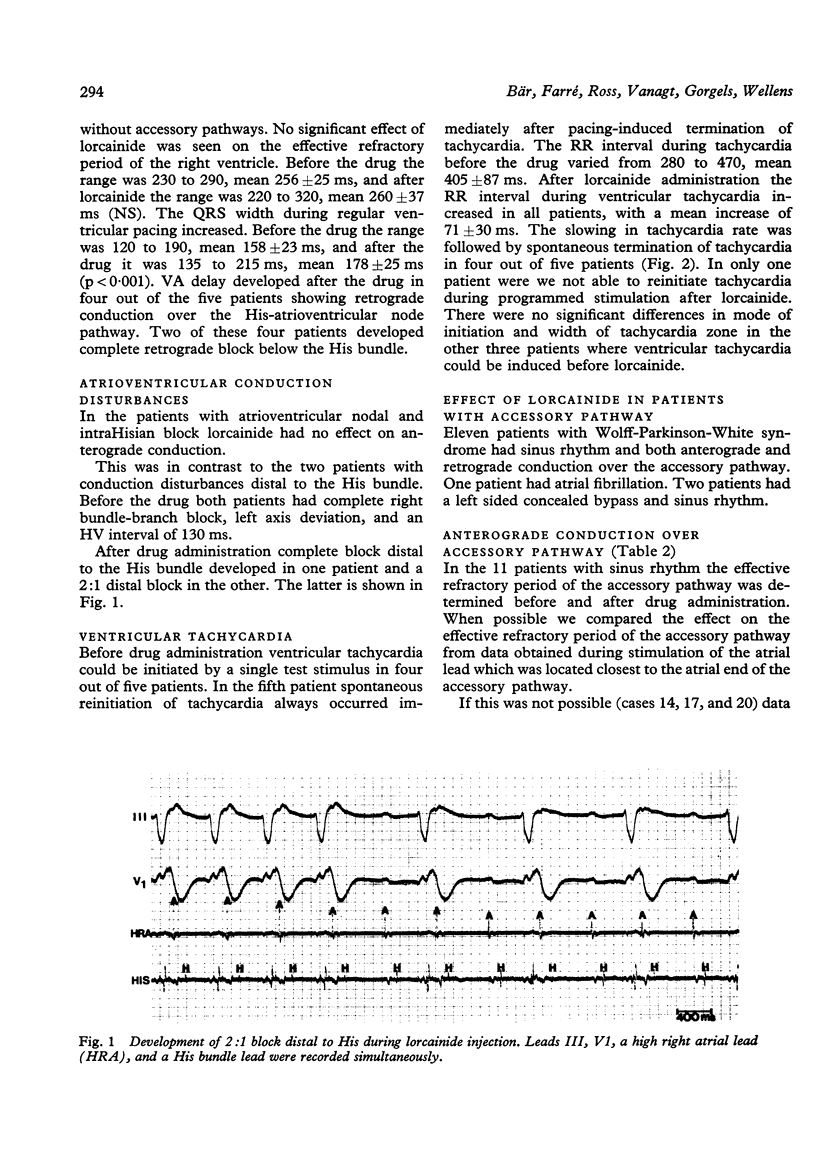
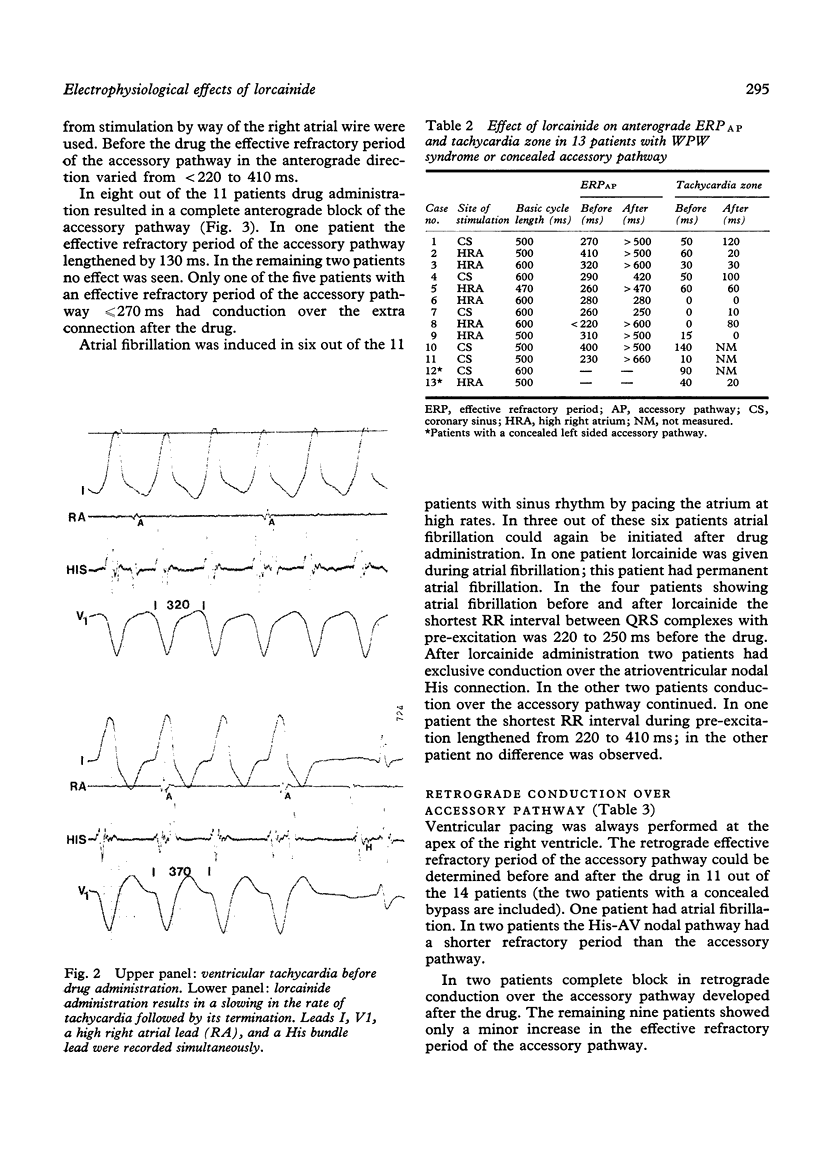
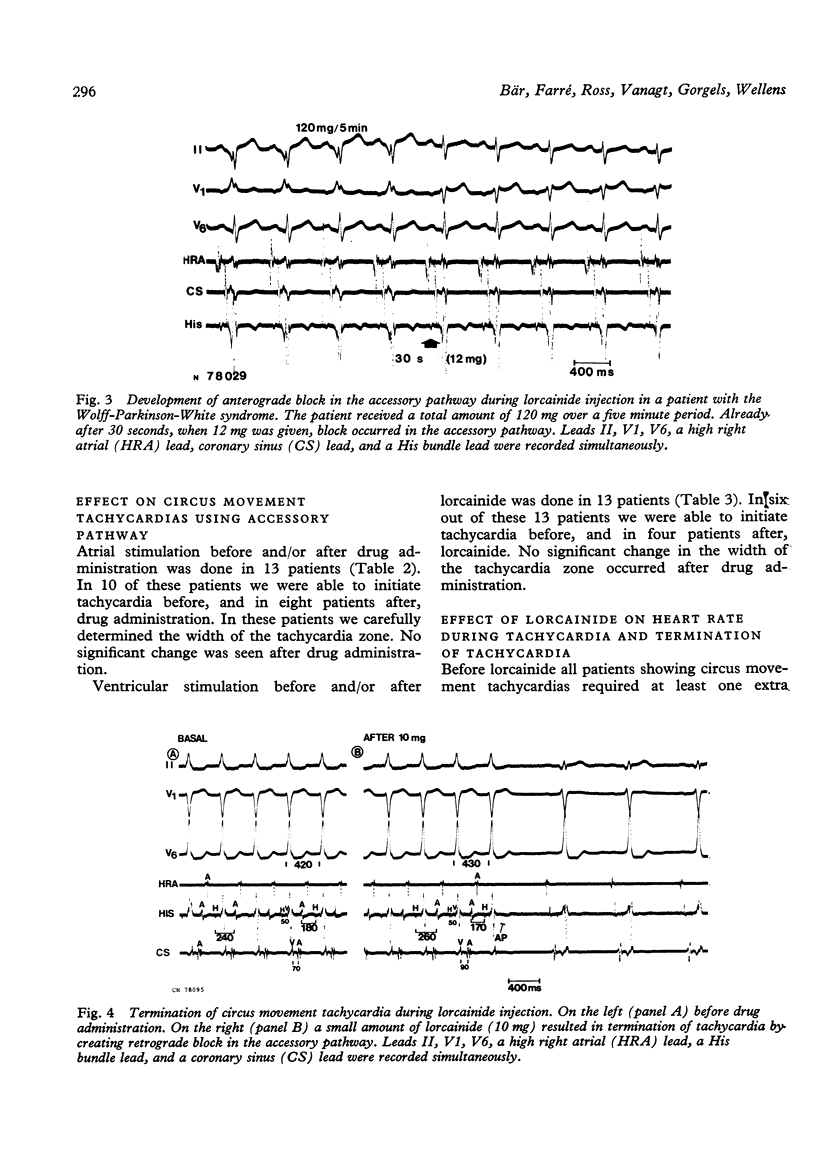
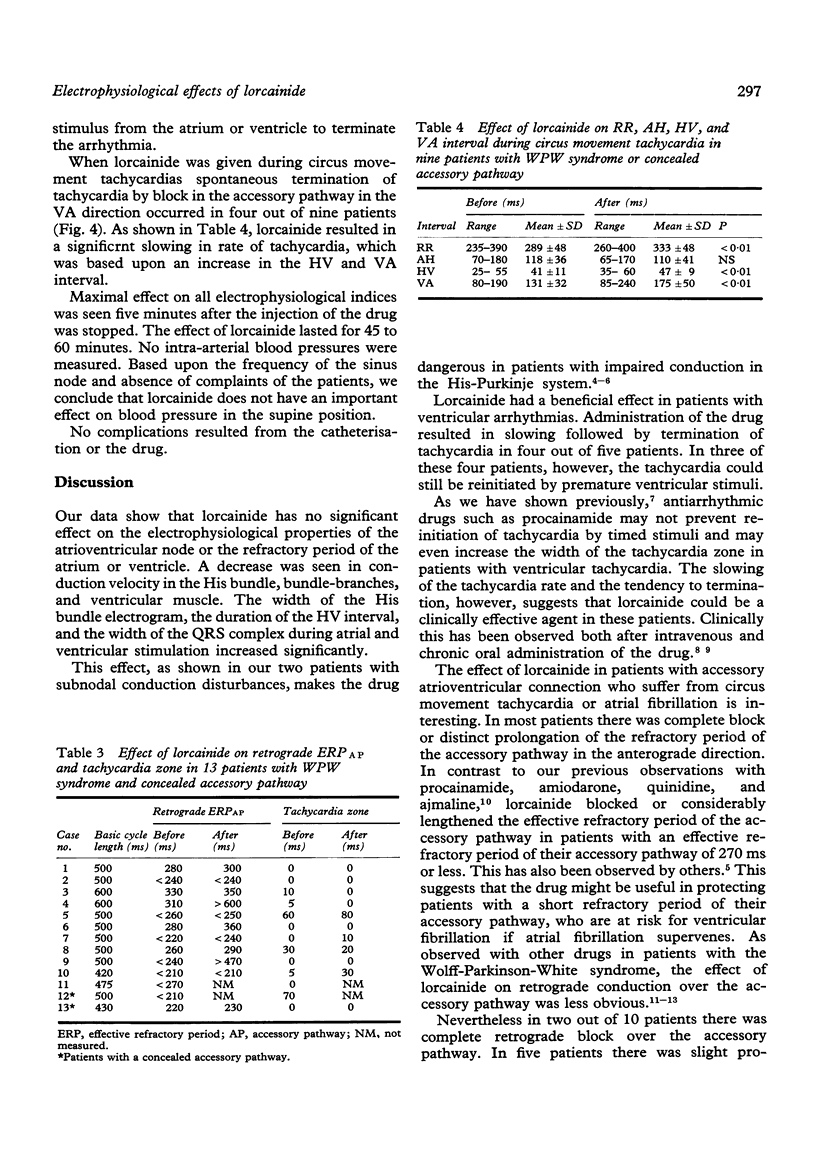
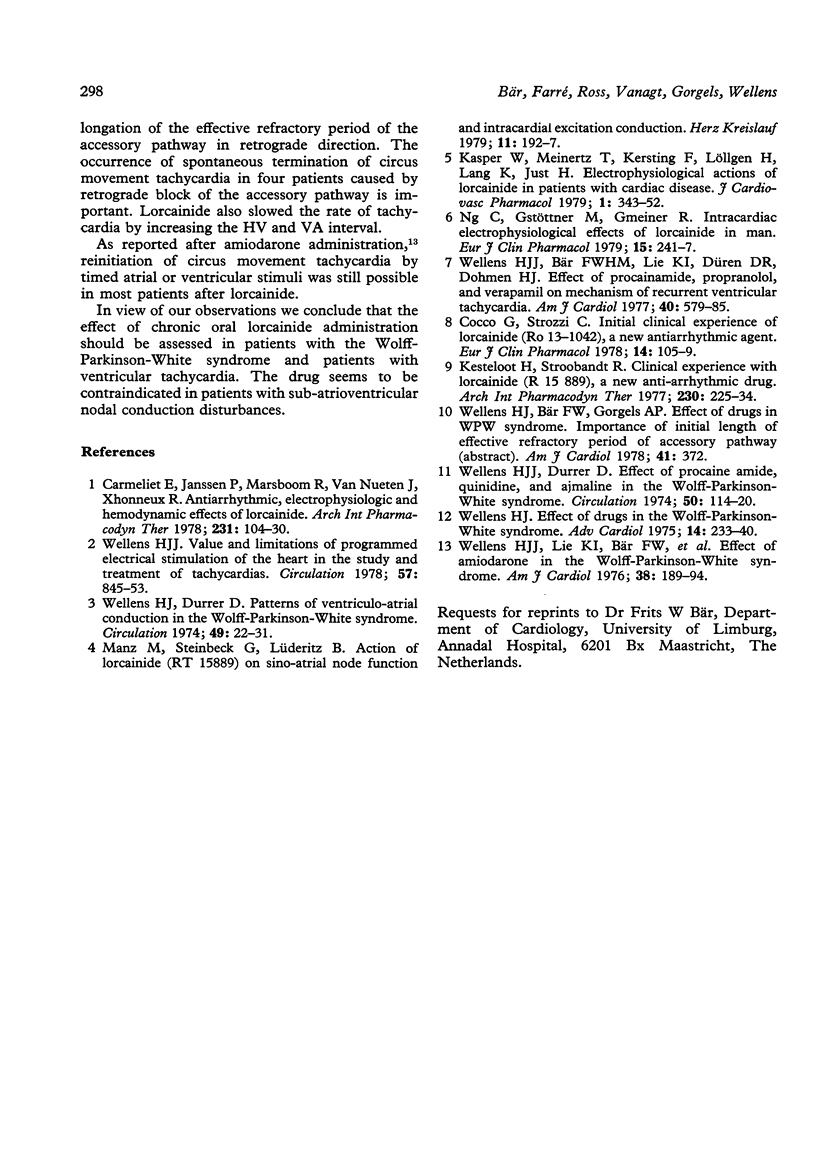
Images in this article
Selected References
These references are in PubMed. This may not be the complete list of references from this article.
- Carmeliet E., Janssen P. A., Marsboom R., Van Nueten J. M., Xhonneux R. Antiarrhythmic, electrophysiologic and hemodynamic effects of lorcainide. Arch Int Pharmacodyn Ther. 1978 Jan;231(1):104–130. [PubMed] [Google Scholar]
- Cocco G., Strozzi C. Initial clinical experience of lorcainide (Ro 13-1042), a new antiarrhythmic agent. Eur J Clin Pharmacol. 1978 Nov 16;14(2):105–109. doi: 10.1007/BF00607440. [DOI] [PubMed] [Google Scholar]
- Kasper W., Meinertz T., Kersting F., Löllgen H., Lang K., Just H. Electrophysiological actions of lorcainide in patients with cardiac disease. J Cardiovasc Pharmacol. 1979 May-Jun;1(3):343–352. doi: 10.1097/00005344-197905000-00006. [DOI] [PubMed] [Google Scholar]
- Kesteloot H., Stroobandt R. Clinical experience with lorcainide (R 15 889), a new anti-arrhythmic drug. Arch Int Pharmacodyn Ther. 1977 Dec;230(2):225–234. [PubMed] [Google Scholar]
- Ng C. K., Gstöttner M., Gmeiner R. Intracardiac electrophysiological effects of lorcainide in man. Eur J Clin Pharmacol. 1979 May 21;15(4):241–247. doi: 10.1007/BF00618512. [DOI] [PubMed] [Google Scholar]
- Wellens H. J., Bär F. W., Lie K. I., Düren D. R., Dohmen H. J. Effect of procainamide, propranolol and verapamil on mechanism of tachycardia in patients with chronic recurrent ventricular tachycardia. Am J Cardiol. 1977 Oct;40(4):579–585. doi: 10.1016/0002-9149(77)90074-1. [DOI] [PubMed] [Google Scholar]
- Wellens H. J., Durrer D. Effect of procaine amide, quinidine, and ajmaline in the Wolff-Parkinson-White syndrome. Circulation. 1974 Jul;50(1):114–120. doi: 10.1161/01.cir.50.1.114. [DOI] [PubMed] [Google Scholar]
- Wellens H. J., Durrer D. Patterns of ventriculo-atrial conduction in the Wolff-Parkinson-White syndrome. Circulation. 1974 Jan;49(1):22–31. doi: 10.1161/01.cir.49.1.22. [DOI] [PubMed] [Google Scholar]
- Wellens H. J. Effect of drugs in the wolff-parkinson-white syndrome. Adv Cardiol. 1975;14:233–240. doi: 10.1159/000397654. [DOI] [PubMed] [Google Scholar]
- Wellens H. J., Lie K. I., Bär F. W., Wesdorp J. C., Dohmen H. J., Düren D. R., Durrer D. Effect of amiodarone in the Wolff-Parkinson-White syndrome. Am J Cardiol. 1976 Aug;38(2):189–194. doi: 10.1016/0002-9149(76)90148-x. [DOI] [PubMed] [Google Scholar]
- Wellens H. J. Value and limitations of programmed electrical stimulation of the heart in the study and treatment of tachycardias. Circulation. 1978 May;57(5):845–853. doi: 10.1161/01.cir.57.5.845. [DOI] [PubMed] [Google Scholar]



